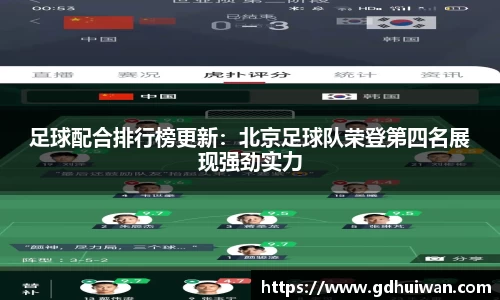南京街舞隊靈活性變革引發熱議探索街舞文化的新發展與創新之路
近年來,街舞文化在中國迅速崛起,尤其是在南京,這一城市的街舞隊伍正經歷著靈活性的變革,引發了社會各界的廣泛熱議。本文將圍繞南京街舞隊靈活性變革及其對街舞文化的新發展與創新之路進行探討。文章將從四個方面進行詳細闡述:首先分析街舞隊靈活性變革的背景和意義;其次探討這種變革如何推動了新型街舞文化的形成;第三部分則關注街舞隊內部結構和運營模式的創新;最后,將總結靈活性變革對未來發展的影響。這些內容旨在深入剖析南京街舞隊如何在新時代背景下,不斷探索和創新,從而推動整個街舞文化的發展。
1、靈活性變革的背景
南京作為一個歷史悠久且充滿活力的城市,近年來逐漸成為年輕人追求潮流與文化的重要陣地。隨著社會經濟發展和年輕人文化需求變化,傳統的單一化街舞表演形式已經不能滿足觀眾多樣化的需求。在此背景下,南京的街舞隊開始探索更為靈活多樣的發展路徑,以適應市場變化。
此外,互聯網和社交媒體的發展使得信息傳播更加迅速,各類新興藝術形式層出不窮。南京的年輕人不僅受到了國際流行文化的影響,同時也希望通過本土化創新來展現個人風格。因此,通過靈活性變革實現與時俱進,便成為了必然選擇。
同時,在國家政策支持和社會認知提升的大環境下,越來越多的人開始重視并參與到街舞活動中來。這種趨勢促使不少團隊意識到,僅靠過去的方法已無法吸引更多參與者,因此急需推陳出新,實現自我突破。
2、推動新型文化形成
隨著靈活性變革的推進,南京街舞隊逐漸形成了一種融合多元元素的新型文化。這種新型文化不僅包括傳統街舞元素,還吸收了現代科技、時尚潮流等多方面因素,使得每場表演都充滿新鮮感與創意。
例如,在排練過程中,不少團隊開始嘗試結合視覺藝術、音樂元素以及互動環節,使觀眾不再是單純的旁觀者,而是可以積極參與其中。這種互動式體驗有效增強了觀眾對表演內容的理解與欣賞,也提升了整體活動氛圍。
此外,與國內外其他優秀團隊交流合作,也為南京地區帶來了新的思想碰撞。通過學習借鑒外部經驗,成員們不斷拓寬視野,提高自身技藝水平,從而進一步豐富了當地街舞文化內涵。
3、內部結構與運營模式創新
Nanjing street dance teams have begun to rethink their internal structures and operational models in response to changing market demands. Traditional hierarchical management is gradually being replaced by a more flexible team structure, allowing members to participate in decision-making processes actively.
This kind of innovation not only enhances team cohesion but also encourages individual creativity. Members are now more willing to share their ideas and suggestions, leading to a more diverse range of performances. Such inclusiveness helps the team adapt to various performance styles and audience preferences.
Furthermore, the introduction of專業化分工 system within the team has made it possible for dancers to focus on their strengths, whether it be choreography, teaching, or stage design. This specialization allows for higher quality performances while also providing opportunities for personal growth.
4、未來發展的影響
Nanjing street dance team's flexibility transformation is expected to bring significant implications for its future development. As they continue to innovate and explore new paths, these changes may lead to better integration with other art forms and cultural events, further enhancing the visibility of street dance culture.
The positive feedback from audiences will likely encourage more young people to join street dance activities, creating a virtuous cycle that promotes both participation and appreciation. In this way, the transformation serves as a catalyst for broader cultural exchange and community building.
Moreover, as local street dance teams gain recognition nationally or even internationally, they could play a pivotal role in shaping the future landscape of Chinese street dance culture. Their experiences may inspire other cities or regions to adopt similar innovative approaches.
總結:
Nanjing street dance team's flexibility transformation reflects the dynamic evolution of urban youth culture in contemporary China. Through embracing change and fostering creativity, these teams are paving new avenues for artistic expression while engaging with a wider audience base.
The insights gained from this exploration not only contribute to the growth of local street dance culture but also offer invaluable lessons for aspiring artists across various disciplines. The journey ahead promises exciting possibilities as these teams continue their quest for innovation and excellence.





